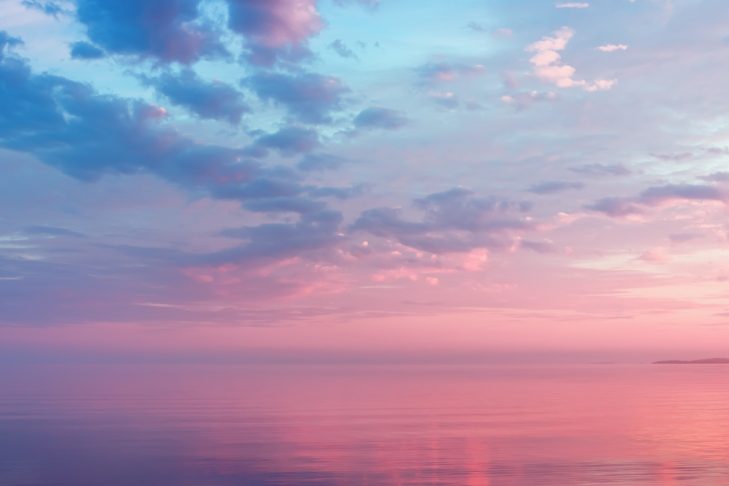I was alone in Newton on a Wednesday in January, fighting a wind that made my wet hair seize up, when I realized I felt calmer than I’d felt in a year. I was on my way home from a mikveh, a sentence that I truly never thought I would say. I come from a very secular background, and I’ve always assumed the ritual bath was one of many antiquated Jewish traditions that I could appreciate but couldn’t see fitting into my 21st-century college-student life. But…my mother always told me not to make assumptions.
January turned out to be tremendously difficult and full of things I didn’t think I’d ever do. It had been about a year since I began seriously questioning my gender identity, and maybe six months since I came out to myself as nonbinary. By that point, I had cautiously begun coming out to others, using different pronouns and changing how I dressed, but I didn’t feel safe enough to do any of it consistently. I felt like I was walking on shifting ground all the time and didn’t know where I was even headed. But it was the realization that I needed to change my name that bewildered me the most. It pulled away my last anchor to what I thought I knew about myself and left me completely unmoored. I remember saying to a friend that I needed something, anything, to ground me.
I remembered that my rabbi, Jordan Braunig, had suggested once that I visit Mayyim Hayyim and promised it wasn’t what I was expecting. So I did some research: Mayyim Hayyim is a progressive mikveh that reimagines mikveh’s purpose of purification to mark renewal and transformation instead. They welcome visitors of all ages and genders and encourage immersing for nontraditional reasons. Visitors often come to renew their connection to their spirituality, mark milestones like weddings or b’nai mitzvot or heal after surviving illness or trauma. They offer ceremonies for coming out and for marking gender transition milestones, for healing and for celebrating joyous life changes. I scheduled a visit.
Jewish law has a long and detailed set of guidelines for how to immerse in a mikveh (as opposed to the vague, nonspecific instructions that we have for all our other traditions…), but at Mayyim Hayyim, kind guides emphasize that visitors should do only the steps that feel right for them. The process begins with a thorough shower, as traditional immersion happens naked, and includes cleaning under the nails and scrubbing away rough skin from the feet. Printed guides that Mayyim Hayyim provided encouraged me to do this slowly—I was to appreciate the inherent wholeness of my unadorned self.
The mikveh waters were warmer than I had expected. From the pool, I could look up into an expansive skylight. I had one of those moments in which you remember how small you are compared to everything else in existence, but I felt completely safe, like I knew I had a place where I fit and where I could be nurtured, and that was all that mattered.
I immersed three times, as is tradition, dropping far below the surface and lifting my feet off the bottom to make sure every spot on my skin touched the water. Between my immersions, I carried out a ritual I had carefully prepared. I wove the traditional blessings that Jews have been saying in mikvot for thousands of years into modern texts that spoke to where I was, spiritually and emotionally, in that moment.
I meditated on some rabbis’ choice to call the Jews “twilight people.” There is a reason our days start and end at the meeting point of day and night, they write—there is something holy about this blurry convergence, about the inability to be defined, about being neither and both at the same time.
I read the “Traveler’s Prayer for a Safe Passage,” and it blurred into my last blessing, “L’chi Lach.” As I whispered the song to myself from the water, I remembered the safeness I felt in Saturday morning services growing up when the adults in the congregation sang it to all the children. The lyrics draw on the story of God telling Abraham to “go forth” and begin his life in new land. But knowing that some sources translate the phrase differently to mean “go for yourself,” or even “go into yourself,” completely changes the significance. It reminds us that we have all that we need within us already, and it is our responsibility to find it. Others may bless and protect us on this journey, but ultimately it’s the individual who has to take the steps.
When I left the mikveh, my nerves had stopped buzzing, my hands weren’t so restless and I felt, if only slightly, more sure of my feet on the ground. In the months since my immersion, I got a new haircut and donated old clothes that didn’t feel like me. I now go by a new name and new pronouns that fit me perfectly. All my friends and family know. In addition to the inevitable fear that I feel in these steps, I’m beginning to see the joy they bring too.
I can’t say that the waters of the mikveh are wholly responsible for each of these milestones—I have definitely benefited a whole lot from self-reflection, supportive friends and plenty of therapy. What I do know is my immersion made me turn my attention from how the outside world sees me to how I see me, and I will hold on to this shift in perspective for years to come.
I still have my moments—so many moments—when everything feels impossible and I can’t understand why any hard things have to happen at all. In these moments, I cling to this blessing, inspired by Rabbi Elliot Kukla and Ari Lev Fornari: B’shem mitzvat hityatzrut. For the sake of the mitzvah of self-formation.
This post has been contributed by a third party. The opinions, facts and any media content are presented solely by the author, and JewishBoston assumes no responsibility for them. Want to add your voice to the conversation? Publish your own post here. MORE



